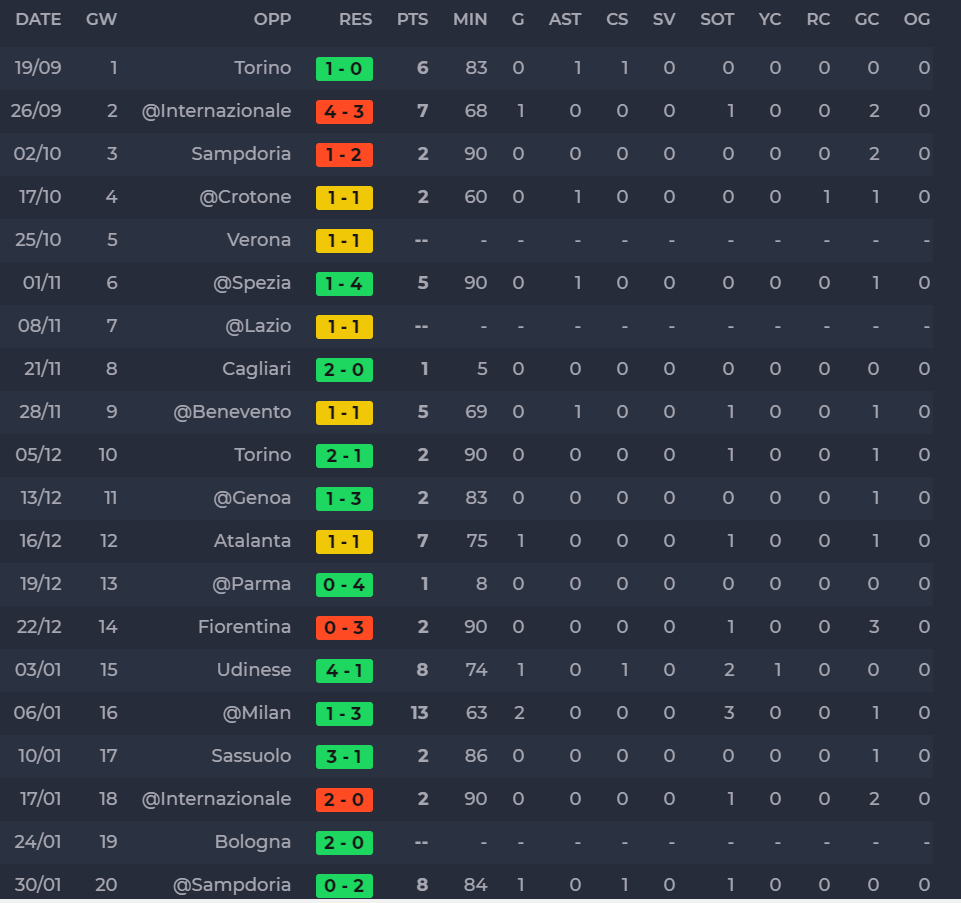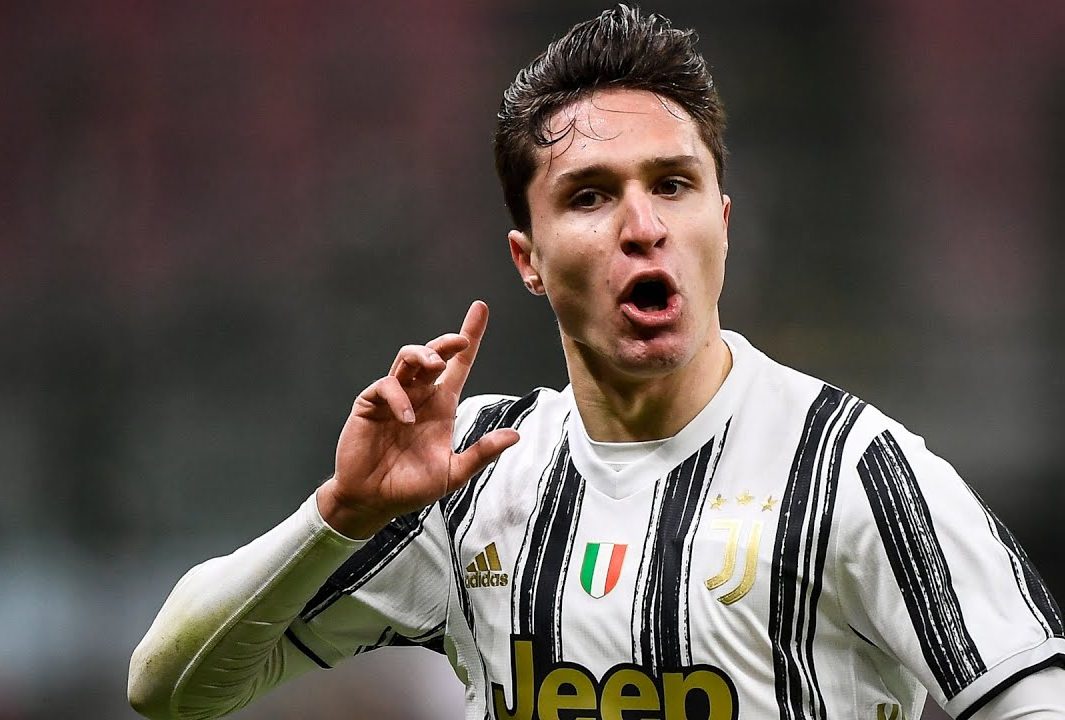Federico Chiesa has come a long way from his days of hot-footing it down the wings at the Artemio Franchi. In recent years, he’s earned a transfer to Juventus, has outperformed many of the Italian wonder kids he grew up with, and has become extremely tactically versatile. Here’s a brief analysis of the evolution of Chiesa.
Not Another “Next Pirlo”
Whether it’s in business, or in football, growing up with a famous, rich father does not hurt your chances of success. Federico’s dad is Enrico Chiesa – a striker who netted 171 goals in Serie A and earned himself almost two dozen call-ups for the Azzurri.
Coincidentally – or maybe not – Fiorentina turned out to be one of the most important clubs in Enrico’s oversized resume. His son, Federico, got his start as part of the Viola‘s youth team back in 2007.
From the onset, terms like “unpredictable” and “naturally gifted” have been associated with the diminutive winger. Federico Chiesa was always viewed as a talent. However, he is part of a generation of young Italian hopefuls where good midfielders are not hard to come by. Nicolò Barella, Sandro Tonali, Manuel Locatelli may have all been touted as the next Pirlo, but Chiesa’s rise up the ranks, in many ways, has come quicker.
Federico Chiesa, a Player Hard to Contain and Difficult to Define
By 2016, the young Chiesa had signed his first professional contract with Fiorentina. He made his debut in a loss to Juventus, a team he would later get to know far better. Mostly playing as a winger, Chiesa scored three goals during that season.
Fiorentina’s side was overflowing with talent that would soon be plucked by Serie A rivals. Among them was future Juventus teammate Federico Bernadeschi. Chiesa didn’t have to wait his turn just because of age concerns. Playing as a winger, occasionally drifting in as an inside forward, and even switching wings at times, he must have put pressure on manager Paulo Sousa to begin preaching detailed tactical plans to the youngster.
Beggars can’t really be choosers. With Fiorentina’s place in the standings slipping, Chiesa was present for almost all the Viola‘s Serie A matches between 2017 and 2020. Furthermore, managers saw the benefit of the player’s loose approach to tactics. During this period, Chiesa tended to contribute to most goalscoring chances for Fiorentina, playing on either side of the wings, behind the striker, or even up front, occasionally in the same game.
Versatility and Tactical Awareness
There are two roles beloved more than any others in Italy. One is the role of the regista, a playmaker that can dictate the rhythm of the game while activating in front of the defense line. The other is the trequartista, an attacking player unencumbered by the shackles of defensive responsibilities. Chiesa could well turn out to be an example of the latter.
Not blessed with an imposing physical build, the youngster has made the best of his strengths: Technique, acceleration, and a knack for meeting the ball at just the right time. Many defenders will be scarred for life by the image of Chiesa flying by them, using his pace to take advantage of counter-attacks.
Chiesa, an Unlikely Juventus Star in the Making
Chiesa made the best of his time in Florence. By 2020, he’d made 137 appearances for the Viola, scoring 26 times. It’s safe to assume that about numerous clubs scouting the player were true. Still, the announcement that he would join Serie A champions Juventus as part of a two-year loan deal, surprised some.
Juventus were now under the supervision of Andrea Pirlo, a rookie manager with very ambitious plans. These included a revamp of the Juve that had won the Serie A title nine times in a row but had left its pampered fans feeling like the team needed to play more expressive football.
Still, there was plenty of talent for Pirlo to call upon. Juan Cuadrado and Dejan Kulusevski started the campaign as the team’s wide midfielders of choice. However, two months into his arrival, Chiesa put in a memorable performance like the one against Dynamo Kyiv where he scored a goal and provided an assist. Other glimpses of brilliance followed, like the victory over Milan, where Chiesa managed a double. In both those matches, bar Cristiano Ronaldo, the youngster played as Juve’s most advanced player.

Growing and adapting in Serie A
Italy loves its football magicians. Chiesa fits that bill. Italian managers love players that follow the tactical plans. Chiesa does not, initially, seem to fit that description, but he’s getting better.
For one thing, he has grown to learn to do simple things adequately. His passing success rate this season is 80.6% in Serie A. Naturally, he wins few aerial duels given his height and doesn’t even cross very often (0.4 crosses per match since joining Juventus). Those are not great numbers, but they’re far better than those enjoyed in his first seasons for Fiorentina.
However, while his performances may seem erratic at times, they help create a player who is virtually impossible to mark. Chiesa is great at sniffing out space. He dribbles nearly two times per game. He takes numerous shots on goal each game, and he doesn’t seem to fear missing some of them. Most importantly, he can play in virtually any offensive position, in the center, or on either side of the wings.
Chiesa is not the player that tactical plans are built around, but he is the rare breed of player that can destroy an opponent’s tactical strategy. Quick, technical, and armed with self-belief, Federico Chiesa is Andrea Pirlo’s most combustible element. Pirlo has recognized the fact that sometimes managers need to embrace chaos.

